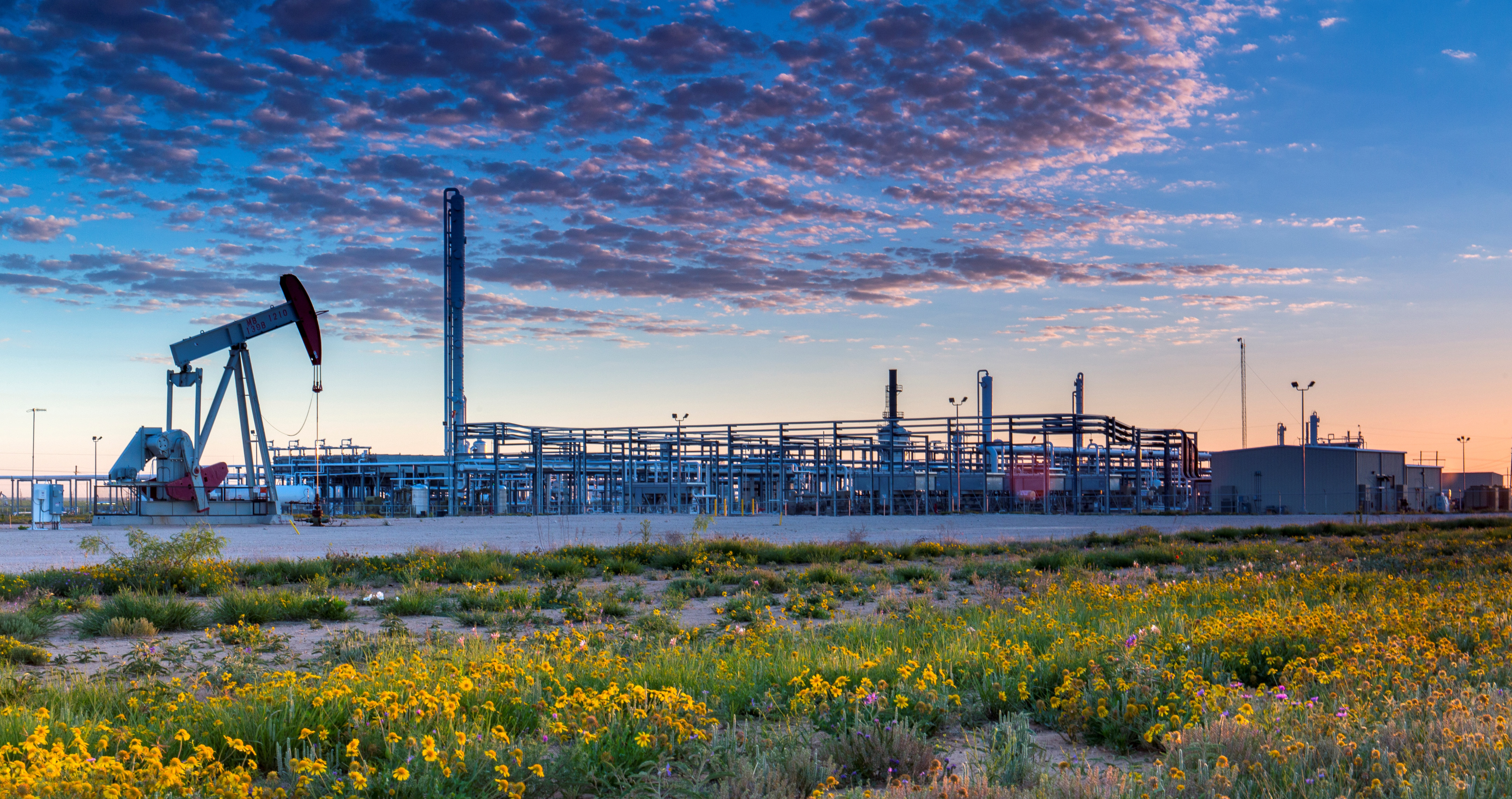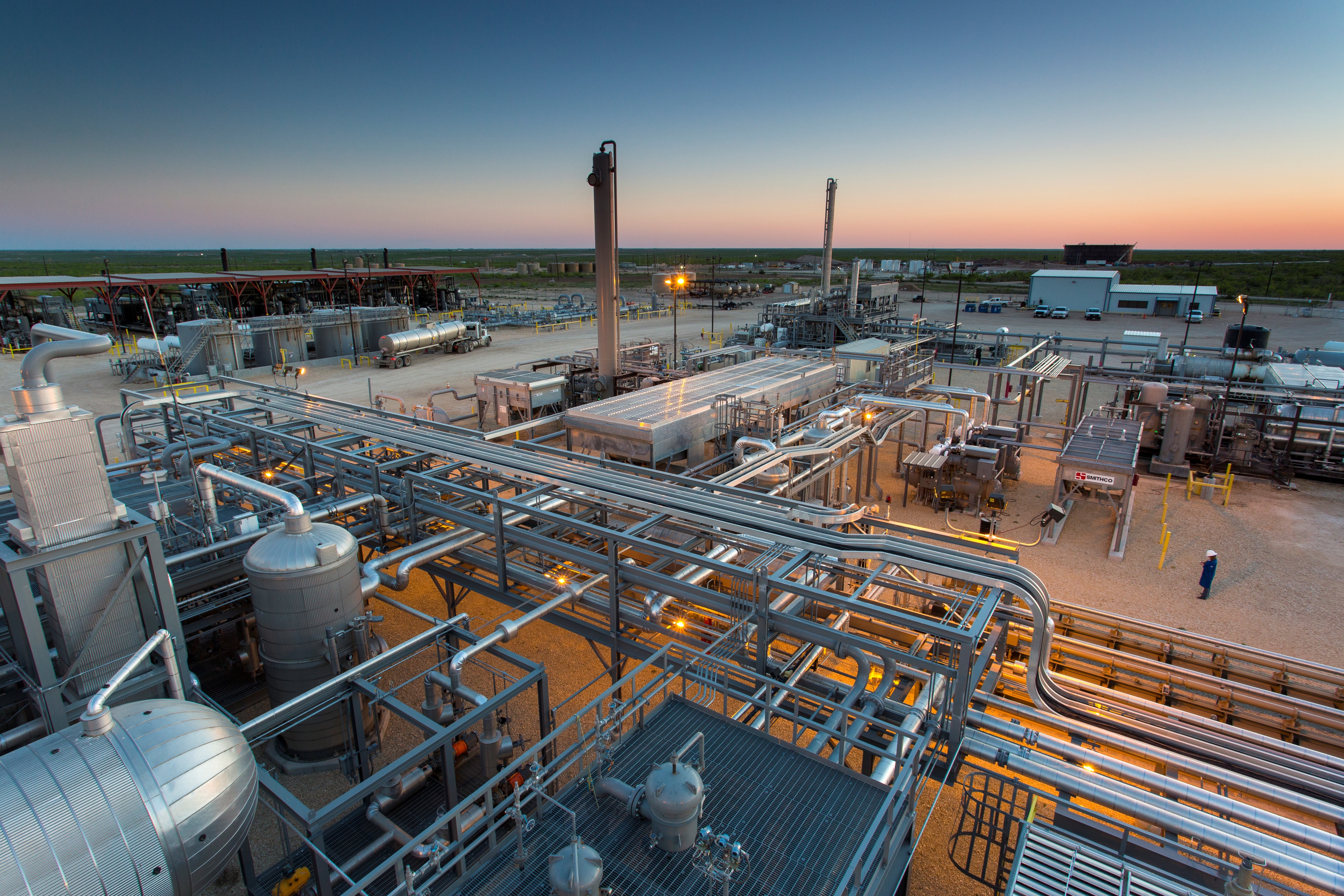By Paul Wiseman
In spite of the precipitous fall in oil prices and the contingent drop in rig counts, production, particularly in the Permian Basin, is still at record levels as wells drilled in the last five years continue to produce. With production so high the midstream sector is still growing even in the downturn.
“We’re not seeing any decline in [the] desire to build out infrastructure” for pipelines or other midstream companies, said Robin Rorick of the American Petroleum Institute in Washington, D.C. Rorick is API’s director of Midstream and Industry Operations.
“We would argue as an industry that, with the downturn in the cost of both crude oil and natural gas, there is even more of a reason to have robust infrastructure put into place, so that companies can realize any efficiencies that they can,” Rorick explained. With more infrastructure comes more price competition, which saves money for producers getting product to market.
Rorick noted that producers are looking for efficiencies and cost savings in all areas, from service companies to suppliers, and that midstream is certainly included.
And while West Texas producers think primarily of pipelines for transportation, Rorick pointed out that API considers all forms equal in importance, including rail, truck, barge, and anything else.
One of the biggest players in Permian Basin’s midstream space is Dallas-based Enlink Midstream, which announced on Sept. 15 its acquisition of $143 million in key assets in the Delaware Basin. That transaction, and its implications, are treated in an accompanying article (“Major Moves in Midstream”) in this issue.
Meanwhile, perhaps it should be asked: what, exactly, is midstream? Some people think of it simply as gathering lines and pipelines. But a formal definition of the midstream sector, found in this statement by Croft Production Systems (at croftsystems.net), is more expansive: “The midstream sector of the oil and gas business concentrates on the processing, transportation, and storage of crude oil and natural gas. Midstream activities are considered a low-risk, highly-regulated segment of the oil and gas industry.”
One reason for the “low-risk” assessment of midstream is because this segment of the industry derives its income largely from fees, and hence is not so affected by price fluctuations of the commodities it transports. That’s one reason why the midstream sector has shined—more so than the upstream (exploration and production) and downstream (refining/delivery) segments—during the past year’s downturn in crude oil prices.
As for pipelines, one of the midstream sector’s most significant “pipelines” just might be the Mississippi River, which moves both crude and refined products. The recent boom changed the Mississippi’s transportation ratio quite radically. “We’ve seen, from 2007 to 2013, almost a complete reversal of the movement of crude. In 2007 you saw the vast majority of the crude and refined products moving north up the Mississippi to support the refineries in the Midwest,” Rorick said. “Now we’re getting enough crude into the Midwest where you’re actually seeing excess crude being shipped south into the Gulf, as well as excess product being shipped down south.”
Even the Mississippi needs maintenance, there being supporting locks and dams along it and the Intracoastal Waterway on the way to refineries in Texas and elsewhere along the coast.
But for the Permian Basin, pipelines do the heavy lifting, and those projects are healthy and continuing to grow.
For example, Magellan is one of the major midstream players, laying claim to the longest refined petroleum products pipeline system in the country. They also store more than 95 million barrels of refined product such as gasoline and diesel. In August the company reported second quarter 2015 income of $177.4 million, a 21 percent increase over the same quarter 2014 numbers.
Magellan is continuing to expand. The company’s Director, Government and Media Affairs, Bruce Heine, listed a number of new projects currently in the works. “We are constructing new storage for, one, condensate at our facility in Corpus Christi, Texas, two, crude oil at our facilities in East Houston and Crane, Texas, and three, refined petroleum products at our facilities in Wichita, Kansas, and Albany, Georgia. Overall, we have more than 4.4 million barrels of storage capacity under construction at this time,” he said in an email interview.
The downturn has not affected future projects either. “We recently announced a 50-mile extension of the Saddlehorn Pipeline project to include a new origin at Carr, Colorado.
“We are making great progress on the original 550-mile system from Platteville, Colorado, to Cushing, Oklahoma. Permitting work is in the final stages, and nearly all rights of way have been obtained. The mainline pipe has been purchased and is being staged to support construction, which is expected to commence in October. This project is currently on budget and on time for a mid-2016 startup for the Platteville to Cushing segment. The new extension to Carr is expected to be operational by the end of 2016.”
They are also expanding refined products and crude oil marine capabilities along the Texas Gulf Coast. Their new Seabrook Logistics joint venture will build 700,000 barrels of storage and related pipeline structure near Houston, hoping to start in the first quarter of 2017. This could be just the start of things in that area for Magellan.
“We view this as a beachhead investment and are excited about future deepwater docks, storage, and pipeline expansion opportunities that this joint venture provides. These opportunities also include possible connectivity to our refined product and crude oil distribution systems in the area,” Heine noted.
Magellan is doubling the size of its Corpus Christi terminal’s land space, extending its Little Rock refined products pipeline from Fort Smith to Little Rock. All told, the company has $500 million worth of future growth projects under development.
Just as producers look to reduce costs in these days, Magellan is finding that “The overall cost of construction has decreased as the value of some materials have come down.” But this does not seem to be a force driving the company’s rapid expansion.
On the other end of the scale is Navitas Midstream Partners. While Magellan is, as stated, among the largest midstream companies, Navitas is new as a company, incorporating in 2014 and purchasing its first pipeline/processing system, in the Midland Basin, in September of this year. The assets were purchased from a subsidiary of Denver-based DCP Midstream, LLC, according to a press release.
The system, which includes approximately 1,000 miles of low and high pressure natural gas gathering pipelines and a cryogenic processing plant, serves Martin, Midland, and Glasscock counties. The cryogenic plant’s capacity is more than 60 million cubic feet per day. The press release indicates that Navitas plans some upgrades and improvements, the details of which are not available from the privately-held company.
Having just made this purchase, Navitas EVP and CFO William Byers indicates that it’s full steam ahead for the company. “While the energy market is in a down cycle, Navitas plans to stick to its strategy, which is to grow its asset base in the Permian Basin. We are focused on organic growth, acquisitions, and joint ventures.” Because it is privately held, the company has flexibility to pursue growth opportunities, he continued.
The Basin’s production present and future continues to look strong, Byers said, echoing the statement from API’s Rorick. “If you look across the economics of all plays in the U. S., the Permian Basin should continue to have drilling activity even in today’s environment.”
Even so, a prolonged downturn could be costly, according to Byers. “In downturns, decreased drilling activity can result in less demand for midstream services. Lower volumes and/or lower commodity prices can result in lower cash flows for midstream companies.” As in the upstream sector, lower cash flows are especially problematic for those who are highly leveraged. Helping Navitas in that regard is their private equity sponsor, New York-based Warburg Pincus.
Planning energy projects longterm wherever they fall in the stream—up, mid, or down—always involves long lists of contingencies. But currently those in the midstream sector in the Permian Basin seem upbeat because even as production levels off, it’s still much higher than it has been in years, meaning there should continue to be major demand for midstream services for the near future.
Paul Wiseman is a freelance writer in Midland, Texas.












